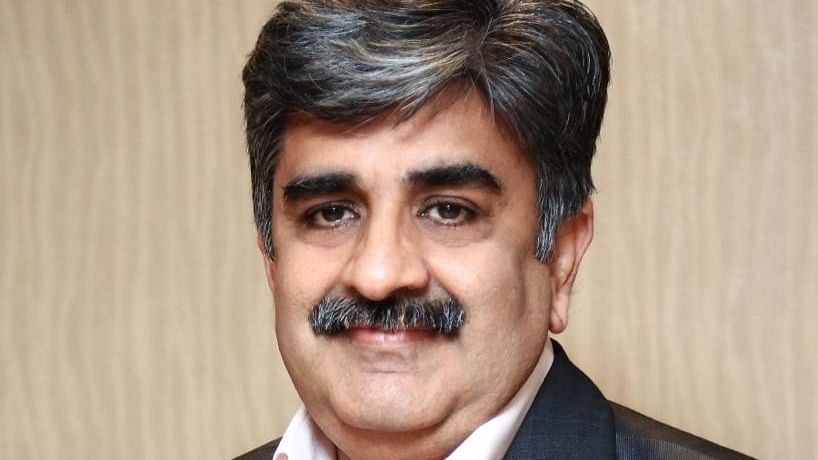
Pankaj Mohindroo.
Credit: Special Arrangement
India is on the radar of several global electronics giants, who are looking to gradually diversify from China, the world’s largest manufacturing hub. Pankaj Mohindroo, Chairman of India Cellular and Electronics Association, sat down with DH’s Lavpreet Kaur on the sidelines of of Semicon 2024 to discuss strides made in recent years to make India an electronics hub, challenges ahead for its chipmaking endeavour and what lies ahead for the industry.
Edited excerpts.
How geared up is the Indian electronics industry?
India has essentially been a user of semiconductors. So far, we have been developing products for global companies. But now India is trying to build a semiconductor product design ecosystem, train manpower on semiconductors, set up Assembly, Testing, Marking and Packaging (ATMP) facilities and develop fabs. Within the fabs, there are various verticals and display is an important one that we are putting serious focus on because the display industry has skewed into one geography that is not good for the global market.
How is the industry perceiving the fall-out between Foxconn and Vedanta? Has it been a major setback?
These are not failed deals. In semiconductors, it’s so complex that consortiums come together. Now, this was public knowledge because both are listed companies but subterranean discussions exist and it’s truly a global industry where the technologies, skills and competencies are available at various places and you need to pull them together. No one company has all these competencies. So I would not say that they fell out, infact it is a positive development for India, because instead of one, we have two big global groups coming in.
What makes India a more viable option for semiconductor manufacturing?
We are going to be a major electronic destination which means that we will be the largest producers of smartphones, laptops, tablets, consumer electronics, strategic electronics, hearables, wearables etc. We have just crossed $100 billion of electronic manufacturing riding on the success of mobile phones. In the segment of mobile phones alone, we have grown from $2.5 billion to $44 billion. So essentially the growth has come from there. It is good and bad both because the other sectors have not fired yet.
The sheer volume market of India has a big momentum. We are also aiming for large exports. To be successful in electronics you have to be in the global market. So, the scale is getting bigger and that is driving the market for sub-assemblies, components and semiconductors etc.
Where does Karnataka stand when it comes to semiconductor manufacturing?
Let’s not only focus on semiconductors, let’s look at overall electronics as such. Now Karnataka is getting more investments. It is one of the higher-rated states in terms of the choice of destination which also includes Tamil Nadu, UP and now Gujarat. These states are competing very fiercely and that is good for both the state and industry, giving them choices and I think Karnataka will have to constantly strive to do better. State governments are now understanding, they are deeply involved in the ecosystem and we have great policies, probably the best in the world. So it’s a very exciting time.
Do you see the supply issues triggered by Covid-19 and the global economic headwinds petering out and what is your outlook for the industry?
Yes, in fact, I think we are in an oversupply situation in a lot of areas because the demand suddenly shot up. For example, prices of displays shot up because of increasing demand for televisions, laptops, etc as people are working from home. So, the challenges that the semiconductor industry was facing have subsided and things are back to normal.
In the last 7-8 years, we grew 300 per cent from $30 billion to $100 billion and now in the next three years, we want to grow another 300 per cent and finally, by 2032, we want to grow another 300 per cent to become a $1 trillion market.
What would be the key to achieving this ambitious goal?
Recognising that we have to do things at a scale is crucial for the industry to grow. Even electronic manufacturing clusters also have to be at a world scale and with housing for the workers. And I think South India has given a wonderful experience of participation and women in the workforce that needs to be emulated across the country, not only in electronics but in the entire industrial world.